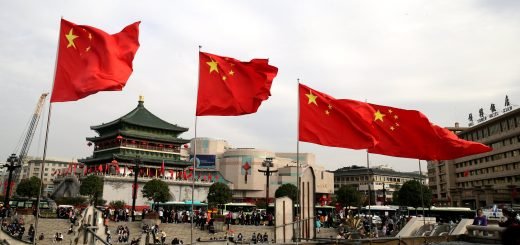ASEAN and the changing status quo in post-pandemic Southeast Asia

The Association of Southeast Asian Nations is an economic union that comprises 10 member states in Southeast Asia. ASEAN promotes intergovernmental cooperation and aims to facilitate economic, political, military, and sociocultural integration among its members and other Asian countries. Over the past decades, the organization has successfully changed the relationship among Southeast Asian countries from being ‘trust deficit’ to that of ‘strategic trust’.
The existence of China in the Indo-Pacific region is one factor that will always influence the ASEAN countries. The majority of the Southeast Asian countries have witnessed a change in their relationship with China after the world was hit by the deadly COVID-19 Pandemic. In recent months, China leveraged the pandemic to influence Southeast Asia, an important geopolitical area when it comes to the Sino-American rivalry. China administered soft diplomacy to extend its influence by supplying test kits, medical equipment, doctors and experts, and financial aid to ASEAN countries, which were resource deficit amid the pandemic. However, China’s efforts to help in this region cannot be viewed in isolation, or be seen as altruistic. The possibility of China trying to establish cordial relations in the area could be to garner support for the promotion of the Belt and Road Initiative (BRI), as well as to drive away attention from the South China Sea.

The pandemic served as a reality check to a majority of the ASEAN countries about their heavy dependence on China in terms of trade, economics, and finance. Throughout the lockdowns, the economies of these countries deteriorated, and boosting trade with China became a priority, and although there seem to be frictions among some members of ASEAN and PRC due to China’s territorial claims over the South China sea, construction of islands and military operations, most countries in this Indo-Pacific region stood in support of China during the pandemic. Though China’s constant efforts to establish dominance in the South China Sea cannot be forgotten, its medical diplomacy and economic heft have helped in overriding these concerns to some extent.
India, ASEAN and The QUAD
India’s relationship with ASEAN is a pillar of the country’s foreign policy and has evolved from its ‘Look East Policy’ in 1991 to becoming an ASEAN Strategic Partner in 2012. The ‘Act East Policy’, evolved from the former ‘Look East’ Policy was announced in 2014 and delivered India’s clear motive to further engage with the Southeast Asian Nations. India has actively participated in regional forums like Asia-Europe Meeting (ASEM), East Asia Summit (EAS), ASEAN Regional Forum (ARF), ASEAN Defense Ministers’ Meeting (ADMM), and Expanded ASEAN Maritime Forum (EAMF). India has also taken part in various policy initiatives, which also consist of Southeast Asian countries as member nations – like the Bay of Bengal Initiative for Multi-Sectorial Technical and Economic Cooperation (BIMSTEC) and Mekong – Ganga Cooperation (MGC). India maintains cordial relations with Indo-Pacific countries and has adopted the ASEAN – India Free Trade Area (AIFTA), established for nations to expand their economic ties in the Asia- Pacific region. On 15th June, India took part in the virtual ASEAN Defense Ministers’ Meeting (ADMM), wherein the ASEAN defence ministers agreed to adopt eight novel concepts and discussion papers, and one standard operating procedure. Indian Defense Minister, Rajnath Singh asserted for freely navigating in International waters, including the South China Sea, and assured ASEAN of India’s multilateral engagement in the upcoming years. Singh spoke about terrorism as the greatest threat to world peace and security, which can only be battled through the cooperation of countries. He informed the dignitaries about India’s constant efforts to combat terrorist funding.
The revival of the Quadrilateral Security Dialogue, popularly known as the Quad, which consists of India, the US, Japan, and Australia has raised concerns about the future role of ASEAN in the Indo-Pacific. The Quad grouping has reassured ASEAN that it is not a threat to the latter’s centrality in the region, but, it is necessary to go back to this statement time and time again, for the Sino-American tensions in the region could alter the Quad’s inceptive plans. China’s presence in the South China Sea has been an area of concern for the US as it establishes dominance over the international waters of the South China Sea, and alternatively, China views the Quad as an organization to contain its rise in the global arena. In this case, when Southeast Asia is a subject of competition between these two great powers, the revival of the Quad is being watched closely. Southeast Asia has seen its share of foreign interventions because of its strategic position in the Indo-Pacific and keeping this in mind, ASEAN has taken various approaches to prevent external interference. The association had declared itself a zone of peace and neutrality (ZOPFAN) and has framed guidelines on how to maintain relations with external powers. With the Quad’s revival, the political situation in the Indo-Pacific region is expected to get more complicated.

ASEAN, though consisting of smaller countries as compared to the Quad, is a powerful organization and is well established, holding meetings regularly. It has both US and China on board in its ASEAN Regional Forum (ARF) and can prove to be a medium for kicking off dialogues between China and the US regarding the South China Sea issue. The organization consists of ten strong dialogue partners, including all four Quad countries.
Whether or not the ASEAN will remain as relevant as it is in the upcoming years can only be determined by how international affairs unfold in the future, but the Quad is a means for Southeast Asian nations to gradually balance out China.


















